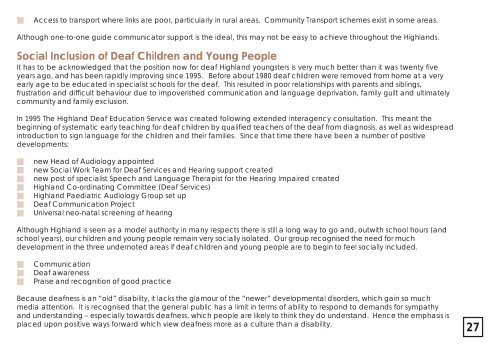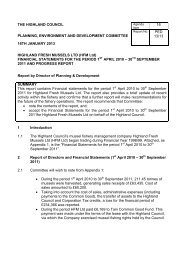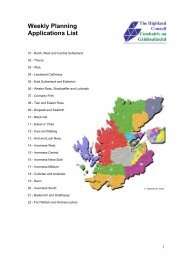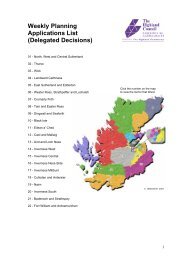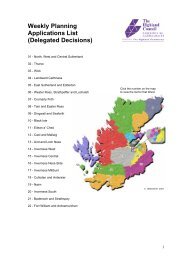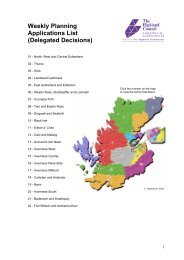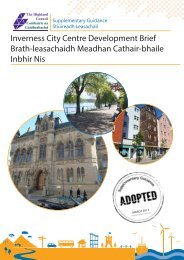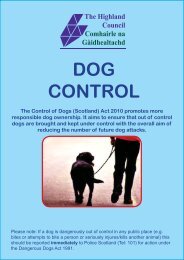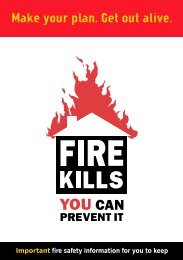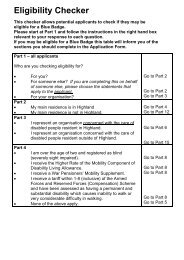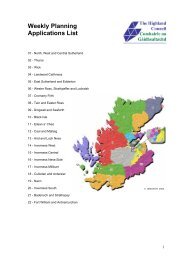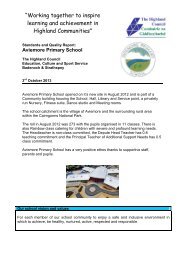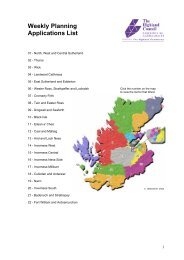A Single Strategy for Sensory Needs - The Highland Council
A Single Strategy for Sensory Needs - The Highland Council
A Single Strategy for Sensory Needs - The Highland Council
Create successful ePaper yourself
Turn your PDF publications into a flip-book with our unique Google optimized e-Paper software.
Access to transport where links are poor, particularly in rural areas. Community Transport schemes exist in some areas.<br />
Although one-to-one guide communicator support is the ideal, this may not be easy to achieve throughout the <strong>Highland</strong>s.<br />
Social Inclusion of Deaf Children and Young People<br />
It has to be acknowledged that the position now <strong>for</strong> deaf <strong>Highland</strong> youngsters is very much better than it was twenty five<br />
years ago, and has been rapidly improving since 1995. Be<strong>for</strong>e about 1980 deaf children were removed from home at a very<br />
early age to be educated in specialist schools <strong>for</strong> the deaf. This resulted in poor relationships with parents and siblings,<br />
frustration and difficult behaviour due to impoverished communication and language deprivation, family guilt and ultimately<br />
community and family exclusion.<br />
In 1995 <strong>The</strong> <strong>Highland</strong> Deaf Education Service was created following extended interagency consultation. This meant the<br />
beginning of systematic early teaching <strong>for</strong> deaf children by qualified teachers of the deaf from diagnosis, as well as widespread<br />
introduction to sign language <strong>for</strong> the children and their families. Since that time there have been a number of positive<br />
developments:<br />
<br />
<br />
<br />
<br />
<br />
<br />
<br />
new Head of Audiology appointed<br />
new Social Work Team <strong>for</strong> Deaf Services and Hearing support created<br />
new post of specialist Speech and Language <strong>The</strong>rapist <strong>for</strong> the Hearing Impaired created<br />
<strong>Highland</strong> Co-ordinating Committee (Deaf Services)<br />
<strong>Highland</strong> Paediatric Audiology Group set up<br />
Deaf Communication Project<br />
Universal neo-natal screening of hearing<br />
Although <strong>Highland</strong> is seen as a model authority in many respects there is still a long way to go and, outwith school hours (and<br />
school years), our children and young people remain very socially isolated. Our group recognised the need <strong>for</strong> much<br />
development in the three undernoted areas if deaf children and young people are to begin to feel socially included.<br />
<br />
<br />
<br />
Communication<br />
Deaf awareness<br />
Praise and recognition of good practice<br />
Because deafness is an “old” disability, it lacks the glamour of the “newer” developmental disorders, which gain so much<br />
media attention. It is recognised that the general public has a limit in terms of ability to respond to demands <strong>for</strong> sympathy<br />
and understanding – especially towards deafness, which people are likely to think they do understand. Hence the emphasis is<br />
placed upon positive ways <strong>for</strong>ward which view deafness more as a culture than a disability.<br />
27


